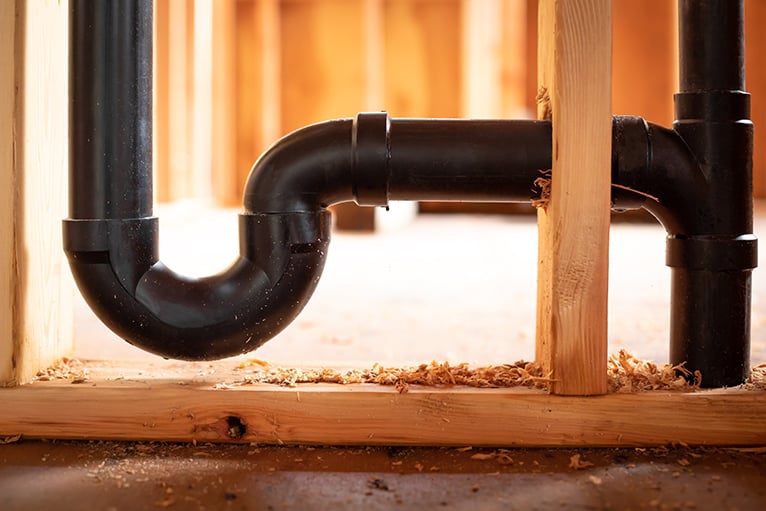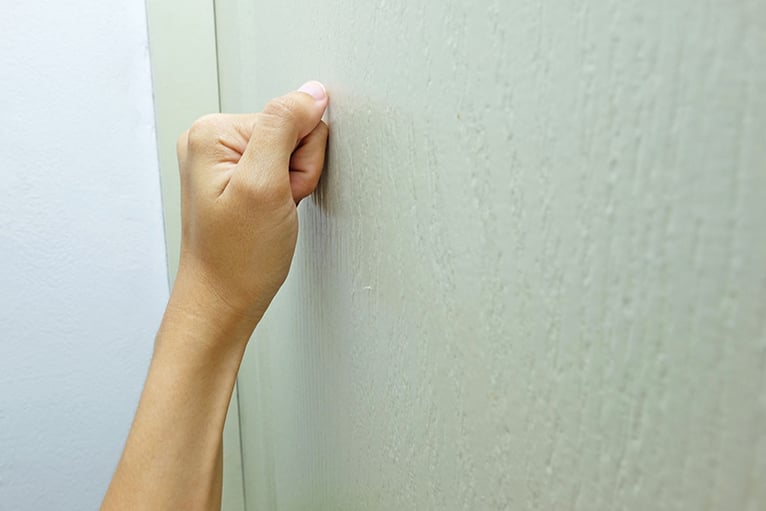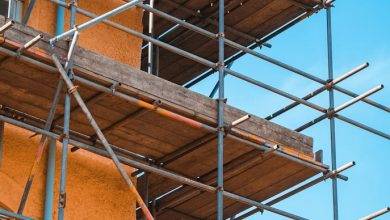What’s the difference between a load-bearing wall and a stud partition wall?
Knocking down a wall to create an open plan layout is a popular choice for homeowners looking to make their homes brighter and airier. But before you pick up your sledgehammer, you need to make sure that you know whether the wall’s load-bearing or a stud partition – otherwise you could damage the structural integrity of your home!
To help you avoid a potential DIY disaster, we’ve explained the difference between stud partition walls and load-bearing walls below.
Stud partition vs load-bearing walls

Whilst knocking down any wall in your home might seem daunting at first, there are two key differences which make one type of wall harder to remove than the other.
Load-bearing walls are riskier to remove
Load-bearing walls support the weight of either the floor above it or the roof, so knocking it down or making any changes to it could cause major structural problems if you don’t know what you’re doing.
They’re made of different materials
Stud partition walls are usually made from a timber frame and plasterboard. On the other hand, load-bearing walls are usually (but not always) made from much sturdier materials like concrete, steel and brick, because of the role they play in supporting your home’s structure.
So, stud walls are usually much easier to remove than load-bearing walls. However, it’s important to remember that you may still undercover electric wiring and plumbing when removing a stud wall, which makes the job slightly more complicated. In this case, it’s best to speak to an expert builder before taking down a wall.
Connect with a vetted builder on Rated People.
How to tell if a wall is a stud partition wall or a load-bearing wall

There are many different checks that you can perform to get an idea about whether a wall is load-bearing, but there are no black and white rules. If you’re in any doubt, it’s always best to seek advice from a builder.
1. Knock on the wall
One common check is to simply knock on the wall and see if it sounds hollow. Load-bearing walls are usually solid, whereas stud partition walls are hollow. But, this isn’t always the case, so don’t use this as your only check!
2. Check the wall above
If the wall you’re thinking about removing is downstairs, check the wall directly above it upstairs first. If this wall is solid, it could indicate that the one downstairs is load-bearing.
3. Is it an exterior wall?
Exterior walls are almost always load-bearing, regardless of what material they’re made from.
4. Look at your property’s foundations
Have your property’s foundations examined to identify which walls have beams that go directly into the concrete foundations. These will usually be load-bearing walls.
5. Consult construction documents or floor plans

If you have access to construction documents or floor plans for your house, then these may contain detailed information about where the beams in your house are. Beams can stretch through multiple walls and floors. Those that start at your property’s foundation and stretch through to the wall above are usually load-bearing.
6. Look at your property’s joists
Usually, walls that are perpendicular to joists are load-bearing, whilst those that run parallel are not.
Whilst all the above points can be good indicators of whether a wall is load-bearing, they aren’t 100% reliable individually. Accidentally removing or making changes to a load-bearing wall can be extremely dangerous, as it could cause your home’s whole structure to collapse over time. It’s always safest to consult the opinion of an expert before starting to knock anything down.




